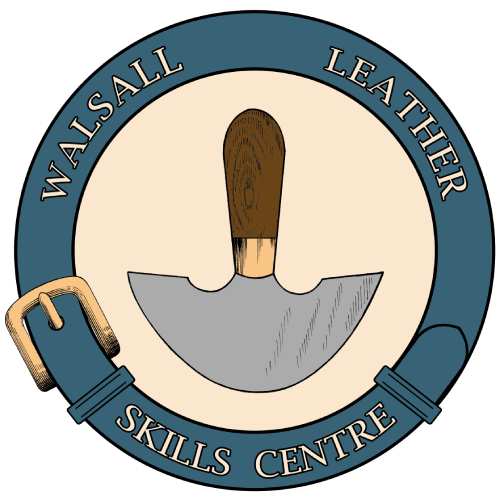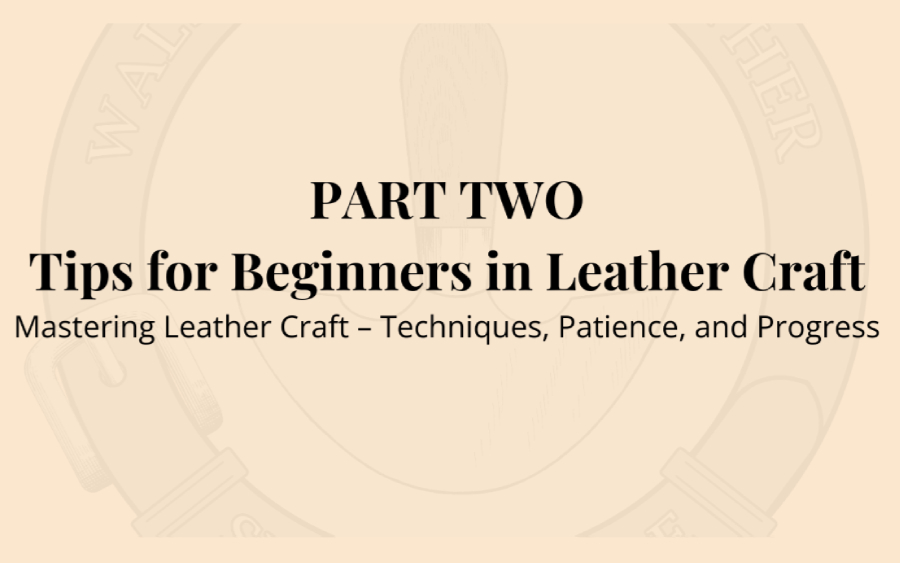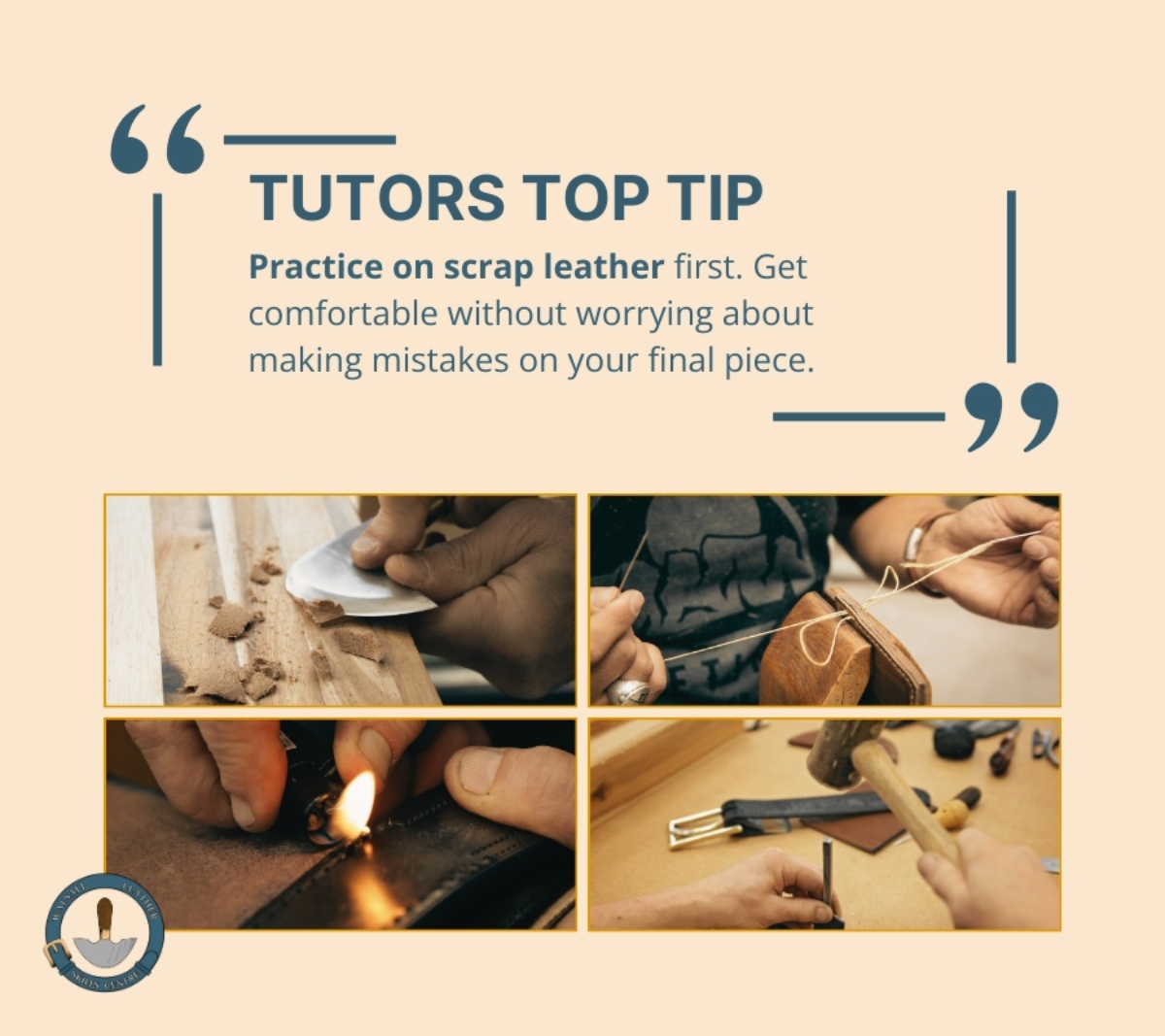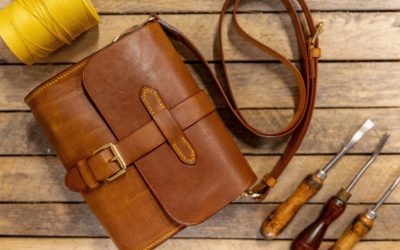In Part 1, we covered the essential tools, starter projects, and the basic materials you need to get started in leather crafting.
Now, we dive into the techniques that will take your skills to the next level, along with the patience and persistence required to progress with leather.
Practice Basic Techniques
Leather crafting involves several fundamental techniques that form the basis of more advanced projects. Practicing these will help you develop confidence and precision which will be vital if you want to progress further.
The more time you can give to your practice, the better.

- Cutting: Accurate cutting is the first step in any project. Use a sharp round knife or utility knife to make clean, straight cuts. Remember: knives that cut leather are sharp. Make sure you are working safely and in a distraction free area to avoid injury.
- Hand-Stitching: The most common stitching technique is hand/saddle stitching because it is strong and durable. It is worth mastering early on; if a thread is cut on one side the overall stitch will retain its integrity. Whereas with machine stitching, if one side is broken the entire length will be compromised and the thread with eventually separate.
- Burnishing Edges: Burnishing gives your leather a smooth, professional finish. Use a burnishing tool or a slicker to smooth out the edges. This helps to make your projects look polished and complete but the main purpose is sealing cut edges.
Take Your Time and Be Patient
One of the most important aspects of leather crafting is patience. It’s a meticulous craft that requires time, focus, and attention to detail.
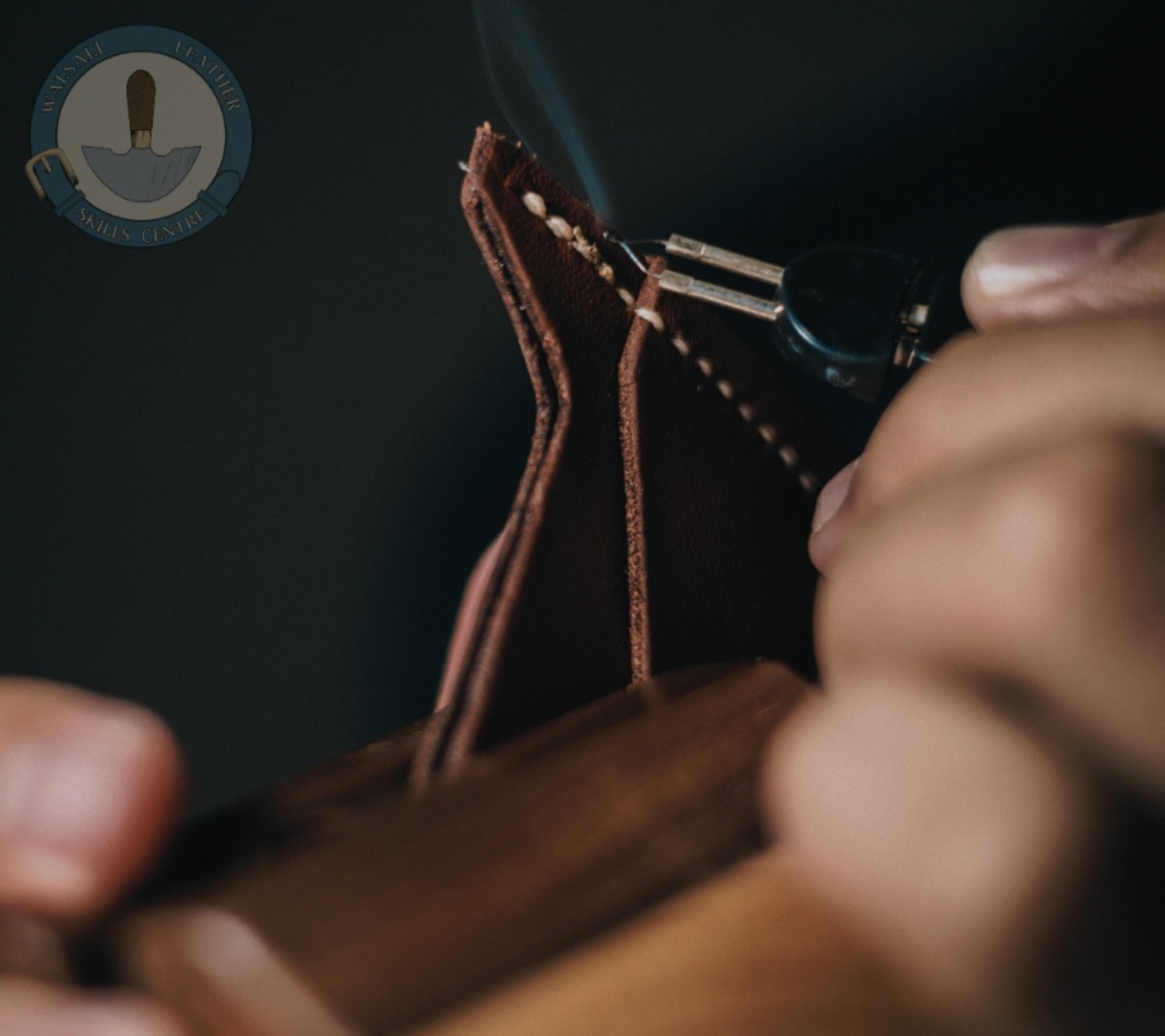
- Avoid Rushing: Leather crafting is not about speed. Rushing through cuts or stitches can lead to mistakes that are hard to fix later. Focus on accuracy and the quality of each step.
- Allow Time for Mistakes: Mistakes are part of the learning process. Whether it’s a misaligned stitch or an imperfect cut, take your time to learn from each project, and don’t be discouraged by errors.
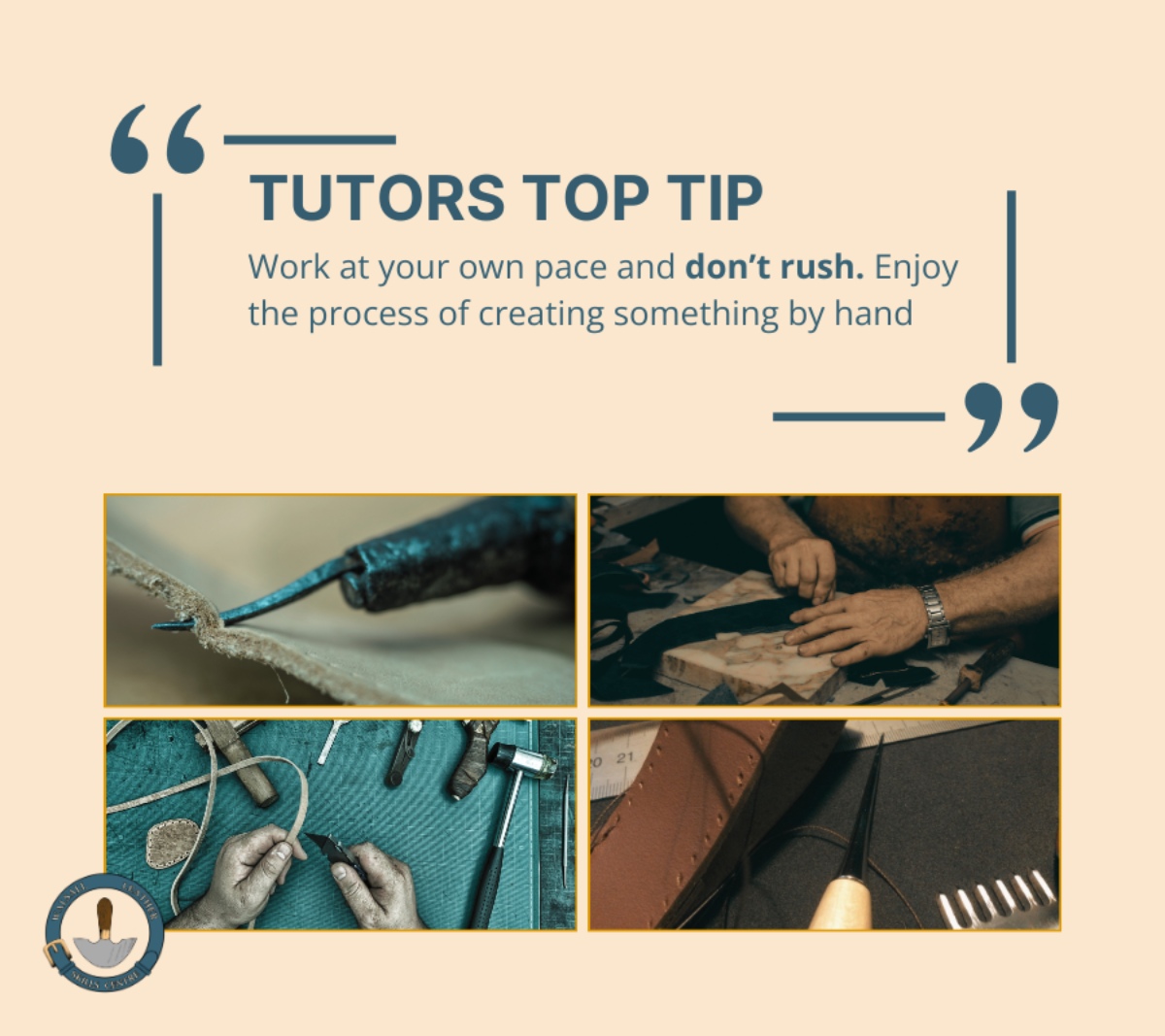
Learn from Others
Leather crafting is an art passed down through generations, and learning from those more experienced is one of the best ways to accelerate your progress.
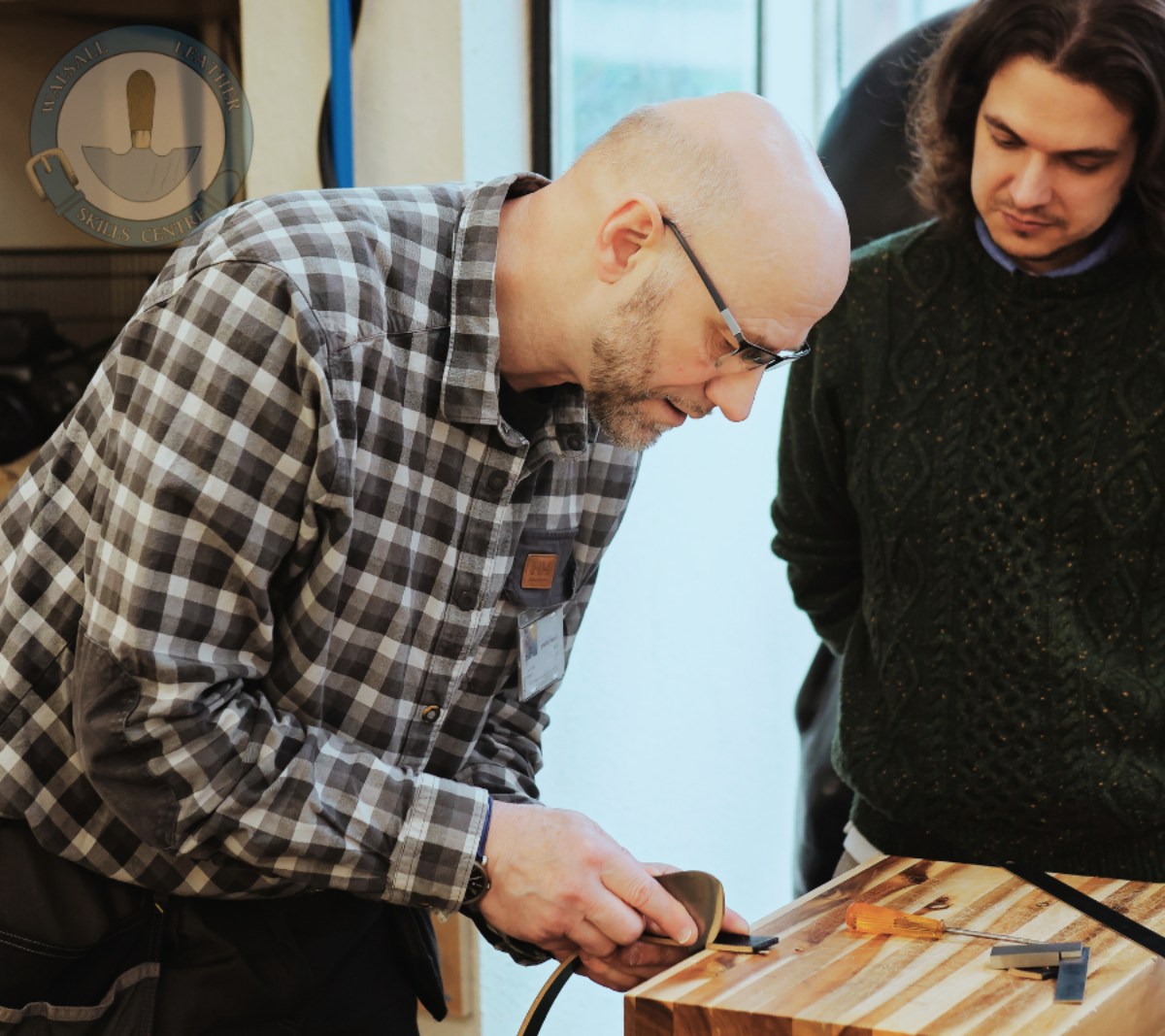
- In-Person Courses: Hands-on learning is invaluable in mastering the craft. Consider taking a course at the Walsall Leather Skills Centre, where you can learn directly from experts.
- Online Communities and Tutorials: There’s a wealth of online resources available, from YouTube tutorials to leatherworking forums. Engaging with these communities can provide tips, tricks, and support along your journey.
- Books and Guides: Leatherworking books and guides offer detailed insights into advanced techniques and project ideas, helping you progress from beginner to expert.

By focusing on improving your basic techniques, taking your time with each project, and learning from experienced leatherworkers, you’ll find yourself progressing steadily and looking to find new projects to take on.
Leather crafting is a skill that takes time, patience, and practice to master. If it is something you enjoy, you can look to find others who are on their own leather craft journey.
There are many courses available, such as at the Walsall Leather Skills Centre and online groups and forums where you can share projects, ideas and discuss all things leather.
Are you ready to take your skills to the next level?
We have a Foundation Course at the Walsall Leather Skills Centre, perfect for beginners interested in leather to get hands-on experience and expert guidance.
